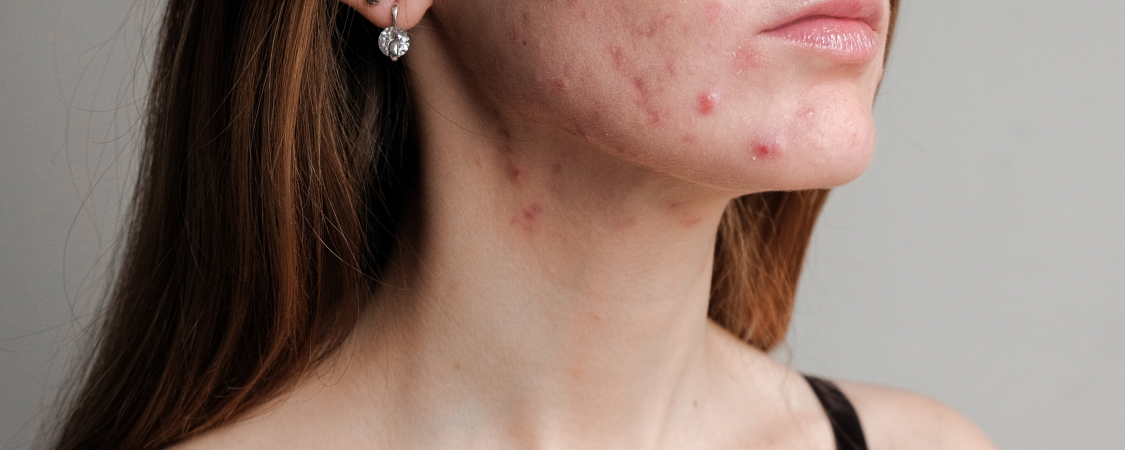April 19th, 2024

Wedding season is upon us, and whether you’re walking down the aisle or attending as a guest, everyone wants to look their best. While finding the perfect dress or suit is essential, don’t overlook the importance of glowing, radiant skin. Your skin is the canvas upon which your beauty shines, and with the right care, you can achieve that coveted bridal glow. Here’s a comprehensive guide to preparing your skin for the big day.
Start Early: The key to achieving flawless skin for your wedding day is to start early. Ideally, begin your skincare routine several months before the wedding. This will give your skin time to adjust to any new products and address any concerns such as acne, uneven skin tone, or dryness.
Cleanse and Exfoliate: A proper skincare routine begins with cleansing. Choose a gentle cleanser suitable for your skin type to remove dirt, oil, and impurities without stripping away natural oils. Follow up with exfoliation to slough off dead skin cells and reveal a fresh, radiant complexion. However, be mindful not to over-exfoliate, as this can irritate the skin.
Hydration is Key: Hydrated skin is happy skin. Invest in a good quality moisturizer that suits your skin type to keep it hydrated and supple. Look for ingredients like hyaluronic acid, glycerin, and ceramides to lock in moisture and plump up the skin. Don’t forget to moisturize both morning and night for best results.
Sun Protection: Protecting your skin from harmful UV rays is crucial, especially if you’ll be spending time outdoors for pre-wedding festivities or the wedding itself. Incorporate a broad-spectrum sunscreen with SPF 30 or higher into your daily routine, even on cloudy days. This will help prevent sun damage, premature aging, and hyperpigmentation.
Treat Specific Concerns: If you have specific skin concerns such as acne, fine lines, or dark spots, consider incorporating targeted treatments into your skincare routine. Consult with a dermatologist or esthetician to determine the best course of action and products suited to your needs. Popular treatments include retinoids for anti-aging, salicylic acid for acne, and vitamin C serums for brightening.
Get Plenty of Rest: In the midst of wedding planning, it’s easy to neglect self-care, but getting enough rest is essential for healthy, radiant skin. Aim for 7-8 hours of sleep each night to allow your skin time to repair and regenerate. Consider incorporating relaxation techniques such as meditation or deep breathing to help reduce stress levels and promote better sleep.
Stay Hydrated and Eat Well: Good skin starts from within, so be sure to nourish your body with plenty of water and a balanced diet rich in fruits, vegetables, lean proteins, and healthy fats. Avoid excessive consumption of alcohol, caffeine, and processed foods, as they can wreak havoc on your skin and lead to breakouts and dullness.
Don’t Forget the Eyes and Lips: Pay special attention to the delicate skin around your eyes and lips, as they can easily show signs of fatigue and dryness. Use an eye cream to hydrate and reduce puffiness and dark circles. For soft, kissable lips, exfoliate regularly and apply a nourishing lip balm or treatment.
Prepping your skin for wedding season requires dedication and consistency, but the results are well worth the effort. By following these skincare tips and incorporating them into your daily routine, you’ll be sure to achieve a radiant, glowing complexion that will have you looking and feeling your best on the big day. Remember, confidence is the most beautiful accessory, so wear it proudly as you walk down the aisle or dance the night away as a guest. Cheers to love, laughter, and luminous skin!
Posted in Uncategorized | No Comments »
April 19th, 2024

As the days grow longer and the warmth of the sun beckons us outdoors, it’s important to remember that while sunshine offers many benefits, it can also pose risks to our skin. While most of us are familiar with sunburns and the importance of sunscreen, there’s another potential danger that often goes overlooked: sun rashes. You may have a sensitivity to the sun if you take certain medications, use certain products or have a genetic predisposition.
What are Sun Rashes?
Sun rashes, also known as sun allergy or photodermatitis, are skin reactions triggered by exposure to sunlight. They can show up as red, itchy bumps, blisters, or patches of inflamed skin. These rashes typically occur within minutes to hours of sun exposure and can persist for days.
Types of Sun Rashes:
Polymorphous Light Eruption (PMLE)
This is the most common type of sun rash, affecting individuals who are sensitive to sunlight. PMLE usually appears as itchy or burning red patches or small bumps on sun-exposed skin. While it can be uncomfortable, it’s not usually serious and tends to improve with time.
Solar Urticaria: This type of sun rash presents as hives or welts upon sun exposure. It can occur quickly after exposure and may cause significant itching and discomfort. Solar urticaria is less common but can be more severe in some cases.
Actinic Prurigo: This is a chronic condition characterized by itchy, red bumps or patches that develop after sun exposure. It often affects people with a genetic predisposition to sun sensitivity and can be quite uncomfortable.
Photoallergic and Phototoxic Reactions: These reactions occur when certain medications or chemicals on the skin react with sunlight, leading to a rash. Photoallergic reactions result from an immune system response, while phototoxic reactions occur when the substance directly damages the skin upon exposure to sunlight.
How to Prevent and Manage Skin Rashes
Protect your skin from the sun: You can do this by seeking shade, wearing sun-protective clothes, and applying sunscreen that offers broad-spectrum protection, water resistance, and an SPF of 30 or more to all exposed skin, including areas prone to rashes. Reapply every two hours or more frequently if swimming or sweating.
Check Your Meds: Your medication may be causing reaction when you go out in the sun. Medications that can cause an allergic sun reaction include ketoprofen (found in some pain meds) and these antibiotics — tetracycline, doxycycline, and minocycline. Consult with a healthcare professional if you’re unsure about the sun-safety of any medications you’re taking.
Avoid Certain Substances: Be cautious with skincare products, perfumes, and medications that may increase your skin’s sensitivity to sunlight.
Stay Hydrated. Drink plenty of water to keep your skin hydrated, as dehydration can exacerbate skin reactions.
Consult a Dermatologist. If you experience persistent or severe sun rashes, consult a dermatologist for proper diagnosis and treatment. They can recommend specific skincare products, medications, or other interventions to manage your symptoms effectively.
While enjoying the sunshine is one of life’s simple pleasures, it’s essential to take precautions to protect your skin from potential harm. Sun rashes may not be as well-known as sunburns, but they can cause significant discomfort and affect your quality of life. By staying informed about sun safety and taking proactive measures to shield your skin, you can minimize the risk of sun rashes and enjoy the outdoors safely.
Source: American Academy of Dermatology
Posted in Uncategorized | No Comments »
April 11th, 2024

Do you find yourself blushing or flushing more easily than others, especially on your nose and cheeks? This redness can be Rosacea, a chronic facial skin condition affecting more than 16 million Americans. April is designated as Rosacea Awareness Month by the National Rosacea Society (NRS) to educate the public about this condition and to encourage individuals suspecting rosacea to seek diagnosis, treatment, and skincare guidance from a dermatologist.
What is Rosacea?
Rosacea typically appears as redness in the nose and cheeks but may gradually spread to the forehead, chin, ears, chest, and back. Its severity ranges from mild flushing to persistent redness with visible blood vessels. Additionally, some individuals may experience bumps and pimples, often mistaken for acne.
Causes of Rosacea
While the exact cause of rosacea remains unknown, researchers speculate that a combination of genetic, environmental, and vascular factors may be involved. Triggers such as sun exposure, spicy foods, alcohol, hot beverages, and stress can exacerbate symptoms. Abnormalities in the immune system and the presence of microscopic mites called Demodex folliculorum on the skin might also contribute to its development.
Symptoms of Rosacea
Rosacea symptoms vary among individuals and may include:
- Facial Redness: Persistent redness resembling a sunburn or blush.
- Visible Blood Vessels: Small, visible blood vessels (telangiectasia) on the face.
- Bumps and Pimples: Painless, acne-like papules and pus-filled pustules.
- Eye Irritation: Rosacea can affect the eyes, causing redness, dryness, and irritation (ocular rosacea).
- Thickened Skin: In rare cases, rosacea can lead to thickened, bumpy skin on the nose (rhinophyma).
Rosacea Treatment Options
Although there’s no cure for rosacea, various treatments can manage its symptoms and improve skin appearance, including:
- Topical Therapies: Prescription creams and gels containing ingredients like azelaic acid, metronidazole, or sulfur can reduce redness and inflammation.
- Oral Medications: Oral antibiotics like doxycycline or isotretinoin may be prescribed to control inflammation and prevent flare-ups.
- Laser and Light Therapies: Procedures such as intense pulsed light (IPL) therapy or vascular laser therapy target visible blood vessels and reduce redness.
- Skincare Products: Gentle skincare products formulated for sensitive skin can soothe irritation and minimize flare-ups.
Why You Should See a Dermatologist
If you suspect rosacea or struggle to manage its symptoms, consulting a dermatologist is crucial. A dermatologist can:
- Provide a Proper Diagnosis: Rosacea may resemble other skin conditions, necessitating an accurate diagnosis from a qualified healthcare professional.
- Personalize Treatment: Tailor treatment plans based on individual symptoms, triggers, and medical history.
- Monitor Your Condition: Regular follow-up visits allow adjustments to treatment plans and address concerns.
- Offer Support and Education: Provide valuable advice on skincare routines, trigger management, and lifestyle modifications.
Rosacea is a chronic skin condition with a significant impact on quality of life if left untreated. Although there’s no cure, effective management strategies are available. If you suspect rosacea or struggle with its symptoms, scheduling an appointment with a dermatologist can help you take control of your condition and enjoy clearer, healthier skin.
Posted in Uncategorized | No Comments »
April 11th, 2024

In the pursuit of radiant skin, we often turn to an arsenal of skincare products and routines, but what if an essential factor to a glowing complexion lies within our diet? The foods we consume may play a pivotal role in shaping the health and appearance of our skin.
Your skin serves as a mirror reflecting your overall health, and what you eat directly may influence its vitality and resilience. Certain nutrients act as the building blocks for healthy skin:
- Antioxidants: These powerful compounds combat free radicals, shielding your skin from environmental aggressors such as UV radiation and pollution. Look for antioxidants like vitamins C and E, beta-carotene, and selenium in your diet.
- Omega-3 Fatty Acids: Essential for maintaining skin hydration and combating inflammation, omega-3s can be found in fatty fish, flaxseeds, and walnuts.
- Vitamins A and D: Crucial for skin repair and regeneration, vitamins A and D support collagen production and facilitate cell turnover, promoting a youthful complexion.
- Zinc: This mineral plays a pivotal role in regulating oil production and may help alleviate acne by reducing inflammation and hormonal imbalances.
Nutritional Tips for Radiant Skin:
- Load Up on Fruits and Vegetables: Vibrant fruits and vegetables are rich sources of antioxidants, vitamins, and minerals vital for skin health. Incorporate a diverse array of options such as berries, oranges, carrots, spinach, and bell peppers into your daily meals.
- Incorporate Healthy Fats: Integrate sources of omega-3 fatty acids like salmon, mackerel, avocado, and chia seeds into your diet to bolster the skin’s lipid barrier, ensuring optimal moisture retention and protection against irritants.
- Choose Whole Grains: Choose to incorporate nutrient-dense whole grains such as quinoa, brown rice, and oats over refined carbohydrates. These grains supply essential vitamins and minerals while boasting a lower glycemic index, which may help prevent acne breakouts.
- Stay Hydrated: Hydration is key to maintaining skin suppleness and elasticity. Aim to drink an adequate amount of water throughout the day, complemented by herbal teas and coconut water for added hydration benefits.
- Limit Sugar and Processed Foods: Excessive sugar consumption can fuel inflammation and accelerate the aging process by damaging collagen and elastin fibers. Minimize your intake of sugary treats and processed foods, opting instead for whole, nutrient-rich alternatives.
- Include Lean Protein: Protein is integral for skin repair and regeneration. Incorporate lean protein sources such as poultry, fish, tofu, and legumes into your meals to support optimal skin health.
In the journey towards luminous skin, remember that your diet plays a pivotal role. By incorporating a nutritionally balanced approach enriched with antioxidants, healthy fats, and essential vitamins and minerals, you can nourish your skin from the inside out, unveiling a radiant complexion that emanates vitality and youthfulness. So, let your plate be your skincare ally, and embark on a culinary adventure towards healthier, glowing skin.
Sources:
American Academy of Dermatology Association
Posted in Uncategorized | No Comments »
March 18th, 2024

Cosmetic procedures have grown in popularity in the past few years, especially because of their destigmatization through social media. According to a 2017 American Society for Dermatologic Surgery survey, the patient population considering cosmetic procedures has more than doubled.
The most popular cosmetic procedures performed are light and laser therapy, facial rejuvenation injections, chemical peels, and body sculpting. When considering cosmetic procedures, it is essential to make sure that these procedures are being administered by a dermatologist and medical team who have the right education, expertise and track record in the field.
What is a Cosmetic Dermatology Professional?
Cosmetic dermatologists and medical professionals possess a unique blend of artistic skill and medical expertise. These experts are equipped to identify and manage any adverse reactions. Their specialization lies in enhancing aesthetics.
Expertise Matters
The success of cosmetic treatments hinges on the expertise of the dermatologist and the medical team. Cosmetic dermatology professionals receive specialized education and training in cosmetic procedures.
Personalized Consultations
You and your needs are unique. Seek cosmetic dermatology professionals who prioritize understanding your individual needs. Our dermatologists and medical team will work with you to develop a tailored approach for your specific concerns and goals.
Experience Matters
Experience is vital when selecting a cosmetic dermatology medical professional. Look for practitioners with successful treatments relevant to your skincare needs. Choose someone with proven expertise in enhancing skin health and appearance and a track record of successful outcomes.
Treatment Offerings
Align the experience with the treatments offered by the cosmetic dermatology team. Select experts well-versed in the various procedures you are considering, such as laser therapies, fillers and injections.
Choosing the right dermatologist and medical professional to perform your cosmetic procedure is essential for achieving your skincare goals. Prioritize expertise, experience, and personalized consultations to find the best professional. Our team of experts are ready to help you achieve your goals. Make an appointment with us today!
Posted in Uncategorized | No Comments »
March 18th, 2024

Could those blemishes really be acne? As an adult, it can be frustrating to encounter that familiar red bump, a common sight in our teen years. Surprisingly, a significant percentage of adults still experience acne, even well into their 50s. Dealing with acne as an adult can be especially aggravating. Treatments that once effectively cleared up acne during our teenage years may now prove ineffective or even exacerbate the condition.
Reasons for adult acne
Adult acne, often referred to as post-adolescent acne, happens after the age of 25. Dermatologists term this occurrence as “adult-onset acne,” which notably affects women undergoing menopause more frequently than men. If you find yourself grappling with acne in adulthood, it’s probable that one or more of the subsequent factors are contributing to its onset.
Hormonal fluctuation
As women age, hormonal fluctuations can trigger acne. The natural decrease in estrogen levels combined with a rise in male hormones can upset the delicate equilibrium, causing an increase in oil production and enlarge pore. Some women experiencing acne along the jawline may uncover a potential underlying issue known as Polycystic Ovary Syndrome (PCOS). Symptoms of PCOS include irregular periods, ovarian cysts, weight gain, facial hair growth, and hair thinning on the scalp.
Stress
Studies have uncovered a clear connection between stress and flare-ups of acne. When we’re stressed, our bodies ramp up production of androgens, exacerbating the issue. Additionally, stress elevates hormones such as cortisol, which can inflame the skin and worsen acne symptoms. These hormones stimulate oil glands and hair follicles, perpetuating the cycle of acne, especially in times of prolonged stress.
Family ties
Acne can run in families. Research studies have shown that people may have a genetic predisposition for acne. If your parents had acne, it’s likely that you’ll also develop it as well.
Hair and skin care products
Your products may be causing you acne. To prevent outbreaks from your products, you should choose products that have include the following terms:
- Non-comedogenic
- Non-acnegenic
- Won’t clog pores
- Oil-free
Medications Side Effects
Certain drugs can cause acne or acne-like eruptions. Speak to your provider that prescribed the medication if you suspect that a medicine is triggering your acne or making it worse. If you need to continue with the same medication, consult with one of our dermatologists to help you manage your acne.
Health Issues
Occasionally, acne can indicate an undetected medical problem. Upon proper diagnosis and treatment of the underlying condition, acne frequently diminishes.
If you are dealing with acne, consult with one of our dermatologists. They can evaluate your situation and advise you on the best prevention and treatment options for you.
Posted in Uncategorized | No Comments »
March 5th, 2024

As we gear up for exciting travel adventures this spring, whether it’s to a tropical paradise or skiing in the mountains, it’s crucial to prioritize our skincare routine. Traveling exposes our skin to various stressors such as changes in climate, prolonged sun exposure, and different water qualities, all of which can leave our skin feeling dull and fatigued. Additionally, factors like the dry air in airplane cabins and jet lag can wreak havoc on our skin’s health. Here are some expert tips to ensure your skin stays refreshed and radiant throughout your spring break escapades:
- Stay Hydrated: Keeping your skin hydrated is paramount, especially during travel which can dehydrate your skin, resulting in dryness and dullness. Ensure you drink plenty of water throughout your journey to maintain hydration from within.
- Prioritize Sleep: Adequate sleep is essential for skin rejuvenation. Lack of sleep can lead to dark circles, puffiness, and overall dullness. Aim for at least 7-8 hours of sleep each night to allow your skin to repair and regenerate.
- Use Sunscreen: Protecting your skin from the sun’s harmful UV rays is non-negotiable, particularly during outdoor activities. Apply a broad-spectrum sunscreen with SPF 30 or higher generously to all exposed areas of your skin, and remember to reapply every two hours, especially if you’re sweating or swimming.
- Stick to Your Skincare Routine: Don’t abandon your skincare routine just because you’re on the go. Pack travel-sized versions of your favorite cleanser, moisturizer, and other skincare essentials. Stick to your usual routine of cleansing, exfoliating (if applicable), and moisturizing to keep your skin clean, smooth and nourished.
- Exfoliate Regularly: Traveling can expose your skin to environmental pollutants and impurities, leading to clogged pores and dullness. Incorporate gentle exfoliation into your skincare routine a couple of times a week to slough off dead skin cells and reveal a brighter complexion.
- Hydrate Your Skin: In addition to drinking water, it’s vital to hydrate your skin externally, especially in dry or arid climates. Use a hydrating facial mist or a lightweight moisturizer to replenish lost moisture and keep your skin supple and dewy.
- Don’t Forget Your Lips: The delicate skin on your lips is susceptible to dryness and sun damage. Pack a nourishing lip balm with SPF to keep your lips moisturized and protected throughout your travels.
- Stick to Your Own Products: While it might be tempting to experiment with new skincare products while traveling, it’s best to stick to what works for your skin. Using unfamiliar products can potentially irritate your skin or cause breakouts, so stick to your trusted skincare arsenal.
By following these simple yet effective tips, you can ensure that your skin remains healthy, radiant, and glowing throughout your spring break adventures. Remember, a little extra care goes a long way in maintaining that coveted vacation glow!
Posted in Uncategorized | No Comments »
March 5th, 2024

What if one of the biggest secrets to better skin was as simple as resting? There is a profound connection between sleep and our skin.
National Sleep Awareness Week, recognized by the National Sleep Foundation from March 10-16, serves as a reminder of the pivotal role that sleep plays in our overall well-being, including skin health. Research supports the concept of beauty rest with studies linking lack of sleep to skin inflammation and aging.
The Healing Power of Sleep
Sleep plays a pivotal role in the healing and rejuvenation of our skin. During the night, while we’re in the deep stages of sleep, our body undergoes a myriad of repair processes, including skin cell regeneration. Lack of sleep disrupts this crucial repair cycle, leading to dull and lackluster complexion.
Sleep deprivation is intricately linked to stress. The stress hormone cortisol can wreak havoc on our skin, leading to inflammation, breakouts, and premature aging. We can effectively manage stress levels and safeguard our skin’s health and vitality by getting regular quality sleep.
The Impact of Sleep Disorders on Skin Health
Sleep disorders such as sleep apnea not only leave us feeling fatigued but can also take a toll on our skin. Research suggests that interruptions in breathing during sleep can compromise the immune system. Untreated sleep apnea has been linked to more aggressive melanomas. In addition, sleep disturbances have been linked to exacerbating chronic inflammatory skin conditions like atopic dermatitis and psoriasis. Ensuring adequate and uninterrupted sleep is important in managing these skin conditions.
Circadian Rhythm and Skin Health
Our body’s internal clock, also known as the circadian rhythm, governs various physiological processes, including skin repair and renewal. Disruption of this rhythm can have adverse effects on our skin. Studies indicate that UV damage continues to harm the skin even in darkness, emphasizing the importance of the body’s nighttime repair.
The Social Impact of Sleep Deprivation
Beyond its physiological effects, sleep deprivation can also impact our social perception. Research suggests that individuals who are sleep-deprived are perceived as less attractive and less healthy. This highlights the social importance of prioritizing sleep not only for our own well-being but also for our interactions with others.
Practical Tips for Healthy Skin Through Sleep:
• Aim for 7-9 hours of restorative sleep each night.
• Create a calming bedtime routine to signal to your body that it’s time to wind down.
• Invest in a comfortable mattress and pillows to ensure optimal sleep quality.
• Limit exposure to screens and stimulating activities before bedtime to promote relaxation.
• Consider seeking treatment for any underlying sleep disorders to safeguard both your skin and overall health.
• See a dermatologist if you have concerns about your skin health.
Sleep is not just a luxury but a vital component of our skincare regimen. By prioritizing adequate sleep, we can unlock the secret to beautiful, healthy skin from within. So, tonight, let’s bid farewell to sleepless nights and embrace the transformative power of a good night’s sleep for radiant and glowing skin.
Sources:
National Institutes of Health
• Does poor sleep quality affect skin aging?
• Cancer and Sleep Apnea: Cutaneous Melanoma as a Case Study
• Negative effects of restricted sleep on facial appearance and social appeal
Journal of the Academy of American Dermatology
• Sleep impairment in patients with chronic inflammatory skin diseases: A review of mechanisms and management
Posted in Uncategorized | No Comments »
February 21st, 2024

As we journey through life, our skin evolves, reflecting the passage of time and our experience. Just as our needs change with age, so should our skincare routines. Whether you’re in your 20s or 60s, there are treatments to keep your skin looking its best.
In Your 20s: Focus on Prevention and Glow
In your 20s, it’s all about laying a solid foundation for radiant skin while preemptively tackling the signs of aging. Opt for treatments like:
- HydraFacial: This multi-step procedure deeply cleanses, exfoliates, and hydrates the skin, leaving you with a luminous complexion.
- Chemical Peels: Mild peels can refine skin texture and combat early signs of sun damage, ensuring a smoother and more radiant skin tone.
- Microdermabrasion: By buffing away dead skin cells and stimulating collagen production, microdermabrasion promotes a youthful glow.
- Light Therapy: LED treatments target acne, boost collagen production, and enhance overall radiance.
- Medical-Grade Facials: Customized facials tailored to your skin concerns maintain skin health while addressing issues like acne or hyperpigmentation.
In Your 30s: Embrace Early Aging Gracefully
As you enter your 30s, your focus shifts towards addressing early signs of aging and maintaining a youthful appearance. Consider treatments such as:
- Neuromodulators: Anti-wrinkle injections like Botox can prevent dynamic wrinkles from deepening, preserving a youthful visage.
- Dermal Fillers: These helps restore lost volume and minimize fine lines, rejuvenating facial contours.
- Chemical Peels: Medium-depth peels combat sun damage and uneven skin tone, revealing smoother and more radiant skin.
- Laser Skin Resurfacing: Fractional lasers target pigmentation and fine lines, promoting a youthful complexion.
- Microneedling with Growth Factors: Stimulate collagen production and minimize fine lines for a radiant and rejuvenated look.
In Your 40s and Beyond: Nurture Ageless Beauty
As you gracefully enter your 40s and beyond, skincare becomes more targeted towards addressing aging concerns and promoting skin health. Explore treatments like:
- Fractional Laser Therapy: Address age spots and fine lines while stimulating collagen production for a radiant complexion.
- Radiofrequency Skin Tightening: Firm and tighten sagging skin, restoring a youthful appearance.
- Ultherapy: Lift and tighten skin non-surgically, rejuvenating the face, neck, and décolletage.
- Platelet-Rich Plasma (PRP) Therapy: Stimulate collagen and improve skin texture for a radiant complexion.
- Medical-Grade Chemical Peels: Combat sun damage and fine lines, revealing smoother, more radiant skin.
- Dermal Fillers and Neurotoxin Injections: Restore facial volume and minimize wrinkles, revitalizing your appearance.
In every decade, skincare is a journey of self-care and self-love. By incorporating treatments and nurturing your skin at every stage, you can unlock timeless radiance and embrace the beauty of each passing year.
Consult with your dermatologist or skincare professional to develop a customized skincare regimen and treatment plan to address specific concerns and maintain healthy skin. Remember, your skin tells a story—let it reflect a tale of vitality, resilience, and everlasting glow.
Please note: Treatments available may vary by practice, location and provider.
Posted in Uncategorized | No Comments »
February 21st, 2024

If you’re wondering whether you really need to wear sunscreen during the darker and colder winter months, you’re not alone. According to a recent study published by the National Institutes of Health an only an estimated 13.5% of Americans regularly wear sunscreen daily.1 However, the sun produces harmful UV rays all year round – even on cloudy days and during cold winter months. Although the sun’s rays may not feel as strong on your skin during the colder weather, its ultraviolet (UV) rays continue to harm your skin and cause damage and premature aging.
Increased Risk of Skin Cancer
By not wearing sunscreen in the winter, you increase your risk of skin cancer. UV rays are harmful during this time of year because the ozone layer is at its thinnest. Additionally, snow and ice can reflect up to 80% of these rays2, making it especially important to keep your skin protected. Some studies have shown some cloudy conditions amplify harmful UV radiation when the sun’s rays are reflected in the cloud.
Choosing the Right Sunscreen for Winter
Irrespective of skin tone, it’s important to utilize a broad-spectrum sunscreen safeguarding against UVA and UVB rays, with a minimum SPF 30 protection, effectively blocking 97 percent of sun rays.
Considerations for Winter Activities
If you’re doing a lot of activity in the winter, you may need sunscreen that’s water and sweat resistant. And if you’re at higher altitudes, such as a ski resort, look for SPF 50 or higher for the best protection against reflected rays from snow and ice.
Regular Application is Key
Regardless of your activity level and whether it’s sunny or cloudy, it’s a good idea to apply sunscreen to your exposed skin on a daily or more frequent basis. Even small amounts of sun exposure add up and can cause premature aging and increase your risk of skin cancer.
Tips for Winter Protection
- Apply sunscreen to all exposed skin and exposed reflected UV rays, including lips and ears.
- Put on sunscreen for at least 20 minutes before heading outside.
- Reapply sunscreen at least every two hours and more frequently if you’re sweating.
If you have concerns or questions regarding skin changes, do not hesitate to make an appointment with one of our dermatologists. Your proactive approach to skin health can make a significant difference in preventing and detecting skin cancer.
Sources:
1 Sunscreen use amongst US adults: A National Survey, NIH PubMed
2 A Guide to the UV Index: U.S. Environmental Protection Agency
Posted in Uncategorized | No Comments »













